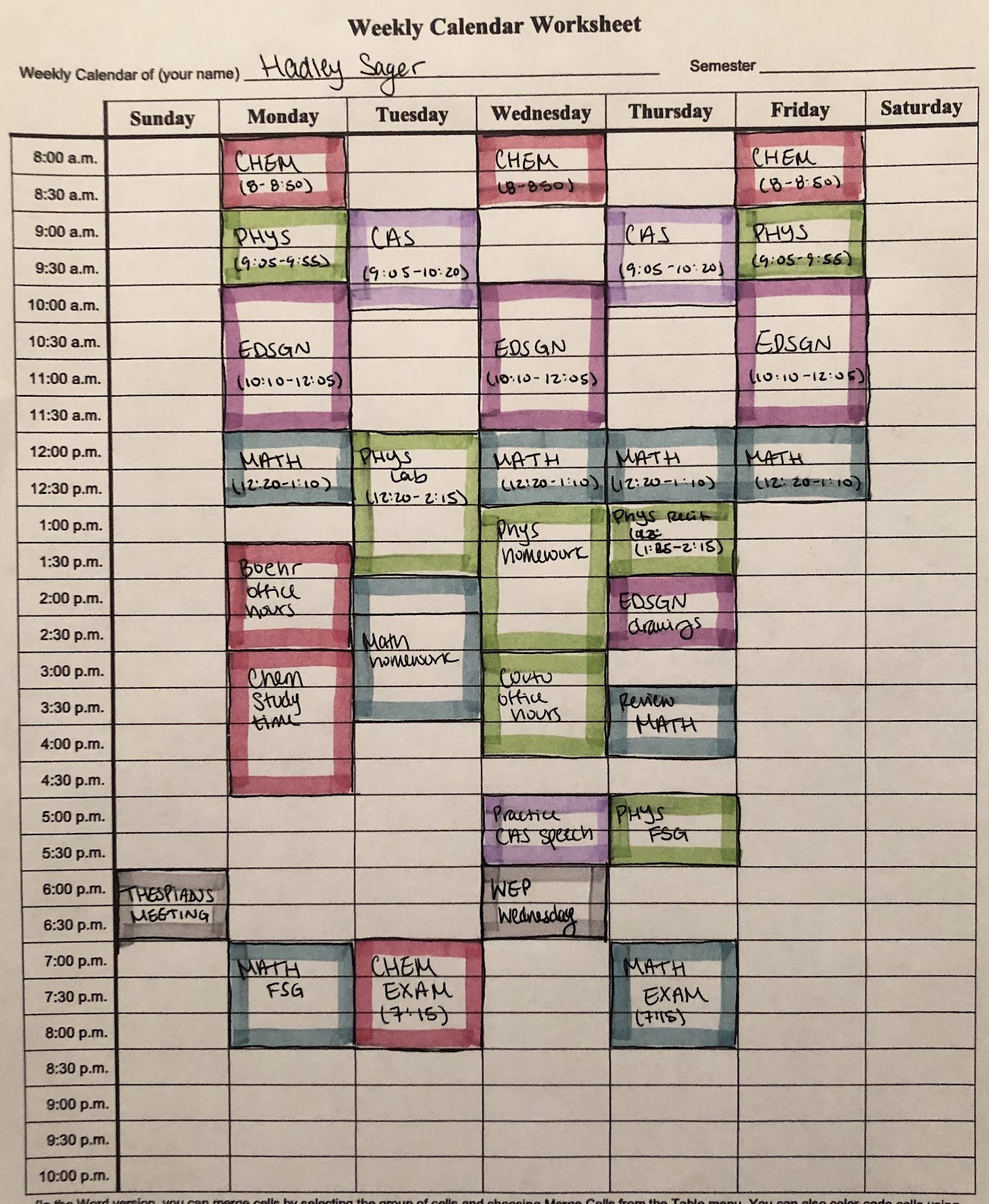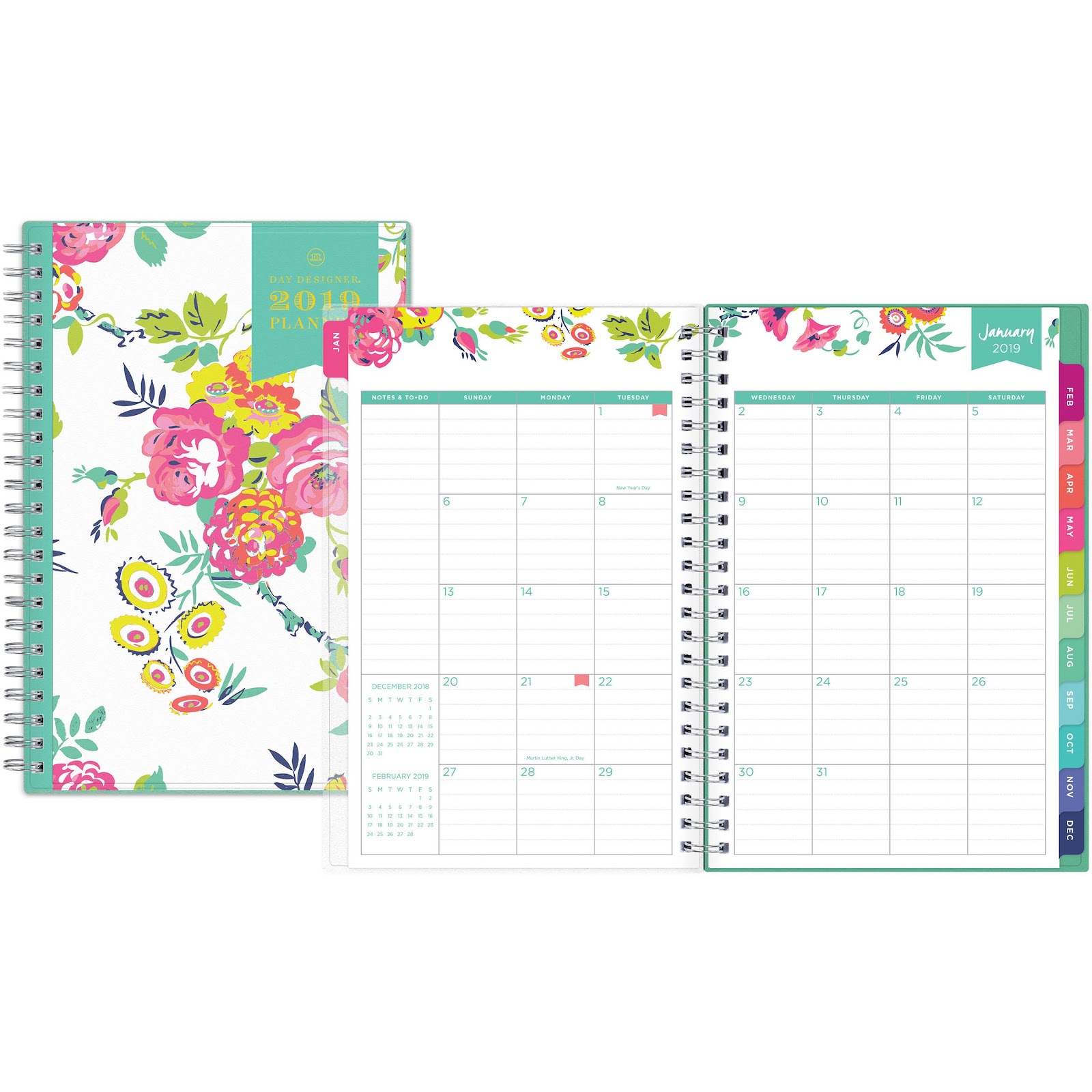Staying organized is always a challenge, but here are a few methods to help you keep you on track this semester. I found it hard to juggle my class schedule, office hours, and homework time during my first few weeks of college. This was especially true when it came to homework. It can be difficult to keep track of all of your assignments when each teacher uses a different learning platform. Luckily, there are many options for planners and calendars to keep you organized. This post will focus on paper organization, specifically printable calendars, planners, and bullet journals.

Printable calendars give you a customizable timetable that you can put on your bulletin board, in your notebook, or in your pocket. The main advantage to these is that they give you an hour-by-hour look at your day. Think Google Calendar but on paper. I find this method especially helpful during exam weeks. I can schedule when I’m going to study for each subject, what classes and meetings I have to go to, and office hours I want to attend all on one sheet. First, print out a blank weekly calendar and gather your most colorful set of pens and pencils. A helpful template can be found here. Then, add your classes to your schedule. I recommend assigning each class a specific color and filling in each class square so they stand out on the page. Now, you can draw in any meetings and study groups you want to go to. If you need some extra help in a class or want to chat with a professor, you can draw their office hours into your schedule. Make sure to assign the office hour blocks the same color as the class! The blank spots are your study and break times. If it works for you, draw in when you are going to work on each subject. You should now have a master sheet for your commitments that week! I find that having this master sheet makes me less likely to procrastinate or forget about a meeting. Yes, it does take some work to set up, but the result can be extremely helpful.

Store-bought planners can be a great resource to help you keep up to date on assignments. And let’s face it, who doesn’t love the satisfaction of physically crossing off a task on their to-do list. These planners are often organized by having a monthly calendar and then a weekly calendar with room to write assignments. Some will even have a daily schedule as well. Many planners have spaces for you to write goals and reflect on what happened that day. I recommend you search the internet to find the planner you like the best. The biggest advantage to a store-bought planner is that it is ready to use the minute you get it. You don’t have to worry about filling in blocks or designing a layout like you would with a printable calendar or a bullet journal. However, you are stuck with whatever layout your planner comes with. If you are like most people and this is not a problem for you, then a store-bought planner is an excellent option! They’re a simple and effective way to stay on top of your tasks without too much work (plus the patterns can be super cute). Here are some planners that your WEPO mentors love: Blue Sky Planners, Passion Planner, Orange Circle Studio, Vera Bradley Planners, Lilly Pulitzer Planners.


Bullet journals are highly customizable planners that can hold your calendars, assignments, goals, habits, or thoughts. As a disclaimer, this method can be very time consuming, but you will end with a journal that is completely personalized to fit your needs. The basic format most people follow is starting with a yearly calendar, or future log, then having monthly and weekly spreads. Often, people will include habits that are tracking sleep and exercise. Pinterest and Instagram have a ton of great ideas for your journal with lots of color and fun designs. If you googled bullet journals for the first time and thought, “I am definitely not artsy enough to do this,” don’t be scared! Bullet journals can be as elaborate or as minimalistic as you would like. My biggest advice for people who are trying bullet journaling for the first time is make one month and see if you like it. If a certain spread is not working for you, change it up! Even after three years of bullet journaling, I still like to change to my layout when I get bored of it. I like to make my layouts one semester at a time. I start with my course schedule and then make a monthly calendar. After each month, I have my weekly spreads. This gives me a structured planner, but it also leaves many pages for me to write notes, jot down my thoughts on the day, and get a little creative with collages and doodles. If you’re looking for a place to start, check out bulletjournal.com. It will give you a basic tutorial on how to bullet journal and they even have a journal you can buy that has guidelines on how to start. The most popular blank notebooks to use are the Leuchtturm1917 or Moleskin journals with either grid or dotted paper. Just have some fun with it and do you!
When choosing an organization method, think about what works for you. Do you like a strict schedule to stick to? Try the printable calendar. Do you want a ready-to-go organization system that many people love? Try a store-bought planner. Do you want a personalized planner that you can also use as a journal? Try bullet journaling! Go with the choice that works for you.
Hadley Sager
Team B Envoy
No comments:
Post a Comment